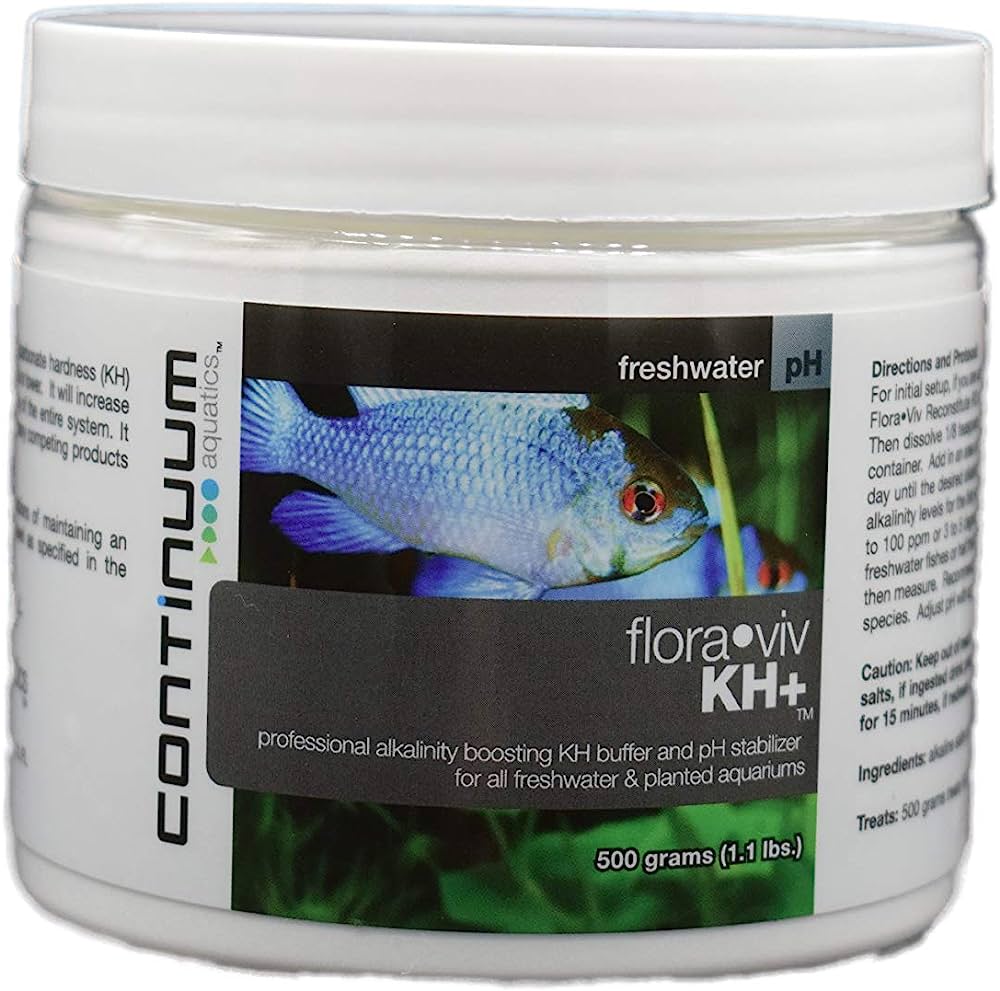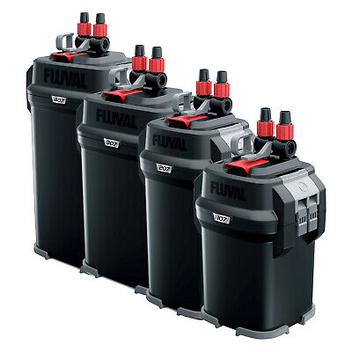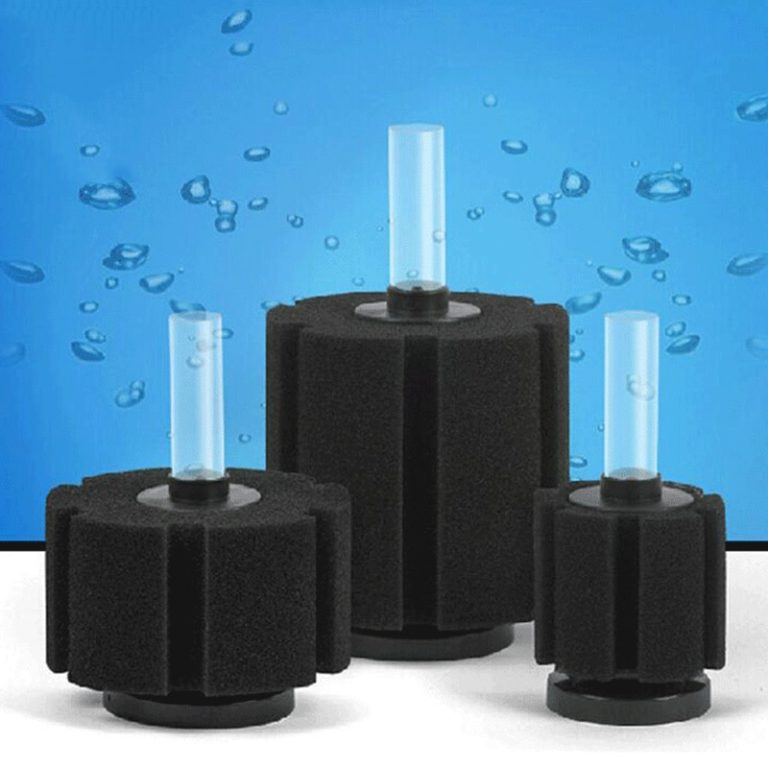Transform Your Aquarium: How to Raise Alkalinity and Maintain pH
To raise alkalinity without raising ph in the aquarium, use baking soda and follow the proper dosing guidelines. The addition of baking soda will increase the alkalinity without affecting ph levels.
Maintaining optimal water parameters in an aquarium is crucial to the health and well-being of its inhabitants. The alkalinity and ph levels are two essential parameters that need to be monitored regularly. While high alkalinity can lead to a stable environment for marine life, it can also cause excessive ph levels, leading to serious health problems for your fish and other aquatic creatures in the tank.
However, you can increase the alkalinity level in your aquarium water while keeping the ph level stable. In this article, we’ll discuss various methods to raise alkalinity levels without impacting the ph levels in your aquarium.

Credit: www.youtube.com
Introduction: The Importance Of Maintaining Alkalinity And Ph In Your Aquarium
Maintaining a healthy aquarium requires keeping an eye on the ph level and alkalinity. These two factors can directly impact the water quality and the well-being of your aquatic pets. However, keeping them in check can be a daunting task, especially if you’re new to aquarium keeping.
In this post, we’ll guide you through the importance of maintaining alkalinity and ph in your aquarium, and how you can raise alkalinity without raising the ph level.
Why It’S Important To Maintain Alkalinity And Ph In Your Aquarium
- Ph levels and alkalinity play a crucial role in the aquatic habitat of your fish and plants.
- High or low values can lead to stress, illness, and even death among your aquatic pets.
- Even minor fluctuations can have a severe effect on the ph stability of your aquarium.
- Most aquarium inhabitants prefer water with a moderate ph level of 7.0 to 8.4.
- Sudden changes in the ph level or alkalinity can make the water toxic, disrupting the natural biological processes of the aquarium.
Common Problems That Arise From Poor Water Quality
- Ammonia and nitrite levels may rise, causing harm to your aquatic pets.
- The ph level may fluctuate, leading to death or stress among your aquarium’s inhabitants.
- Water hardness levels may fluctuate, harming the aquarium’s plants and fish.
- The growth of unhealthy bacteria can cause infections and other serious health issues.
To keep your aquarium’s alkalinity and ph levels adequately balanced, it’s essential to perform regular water tests. By doing so, you can detect any problems early on and take the necessary measures to correct them. Additionally, make sure to research the specific requirements of the aquatic species that you want to include in your tank.
Maintaining healthy water conditions in your aquarium may take some time and effort, but it’s worth it when it comes to providing your aquatic pets with a safe and comfortable home. By following these tips, you can avoid many of the common problems that arise due to poor water quality, helping your aquarium thrive for years to come.
Understanding Alkalinity And Ph
What Is Alkalinity And How Does It Affect Your Aquarium?
Maintaining good water quality is essential for the health and well-being of your aquarium inhabitants. One significant factor in water quality is alkalinity. Alkalinity refers to the water’s ability to neutralize acids. Changes in alkalinity can result in significant consequences for your fish and other aquatic animals.
The key takeaways about alkalinity are:
- Alkalinity measures the ability of water to resist changes in ph levels.
- Alkalinity is crucial for the survival of aquatic animals.
- Low alkalinity can cause ph levels to fluctuate, leading to health issues.
What Is Ph And Why Is It Important?
Ph is a measure of acidity or alkalinity in the water. It is essential to keep ph levels in check to prevent negative consequences for aquatic creatures. If ph levels exceed the recommended range of 7. 0-8. 4, it can have harmful effects on marine life.
When the ph level is high, it can cause excessive death in fish, and low ph levels are fatal for aquatic snails. The key takeaways about ph are:
- The ph scale ranges from 0 to 14.
- Neutral ph is 7.0, while ph above 7.0 is alkaline and below 7.0 is acidic.
- Ph levels affect the ability of aquatic creatures to breathe and absorb nutrients.
The Relationship Between Alkalinity And Ph
Alkalinity and ph are interrelated, and maintaining the right balance between the two is essential for the survival of your aquarium inhabitants. Alkalinity acts as a buffer, preventing sudden changes in ph levels. If alkalinity levels are too low, ph levels can fluctuate, causing severe damages.
On the other hand, high alkalinity levels can lead to elevated ph levels. The following are crucial to keep in mind about the relationship between alkalinity and ph:
- Alkalinity stabilizes ph levels, preventing extreme changes.
- Low alkalinity levels result in high acidity levels, which can be dangerous for your aquatic life.
- High alkalinity levels result in high ph levels, which can be harmful to your aquarium inhabitants.
Understanding alkalinity and ph levels are essential to maintaining good water quality in your aquarium. Keep the guidelines mentioned above in mind to prevent negative consequences of fluctuating ph levels, and maintain a healthy environment for your aquatic creatures.
Testing Alkalinity And Ph In Your Aquarium
Maintaining a healthy environment for your aquarium dwellers means monitoring alkalinity and ph levels. Testing for alkalinity and ph is a necessary task that can prevent health problems for your fish. Read on to learn why regular testing is important and how to test for alkalinity and ph in your aquarium.
How To Test For Alkalinity And Ph
Testing for alkalinity and ph can be done easily with the following steps:
- Gather a ph testing kit and an alkalinity testing kit.
- Test the ph of your aquarium water by following the instructions on the ph testing kit. Generally, you will need to add testing drops to a water sample, shake it, and wait for the color to change.
- Use the alkalinity testing kit to measure the amount of alkaline in your aquarium. Repeat the same testing process you used for ph levels.
Remember that it’s important to follow the testing kit instructions carefully to ensure accurate results.
The Importance Of Regular Testing
Regular testing of alkalinity and ph levels is essential for maintaining the health of your aquarium occupants. Here are a few reasons why:
- Prevents fish health problems: Monitoring and adjusting alkalinity and ph levels is critical to keeping your fish healthy and happy. Levels that are too high or too low could lead to fish diseases or death.
- Supports plant growth: Plants in your aquarium need specific ph and alkalinity levels to survive. Testing regularly can help you maintain the proper conditions for healthy plant growth.
- Aids in water changes: Knowing the alkalinity and ph levels in your aquarium helps you determine the amount of buffering agent and water conditioner to use during a water change.
Testing for alkalinity and ph in your aquarium is crucial for maintaining a healthy living environment for your fish and plants. Regular testing is necessary to prevent health problems and to ensure the correct procedures are followed during water changes.
Keep your aquatic friends happy by staying on top of alkalinity and ph levels in your aquarium.
Raising Alkalinity And Maintaining Ph
Raising alkalinity and maintaining ph in your aquarium can be a challenging task, but it’s essential to ensure the health and survival of your aquatic pets. Alkalinity and ph are two vital parameters of water quality that require attention, and it’s essential to know how to maintain them.
Strategies For Increasing And Maintaining Alkalinity
Alkalinity refers to the water’s buffering capacity to neutralize acids, and it’s essential for maintaining a stable ph. Here are some strategies to consider:
- Use buffers: Buffers provide necessary alkalinity and help maintain ph levels for a more extended period. Baking soda or sodium bicarbonate can help raise alkalinity levels with little effect on ph.
- Add alkaline rocks: Adding alkaline rocks, like coral, limestone, or dolomite, can raise alkalinity levels and help maintain a stable ph. However, it would be best to use caution and test the water for proper dosing.
- Regulate feeding: Overfeeding fish can lead to excess organic matter in the water, which depletes alkalinity. Regulating your fish’s food intake can prevent this from happening.
- Regular water testing: To maintain alkalinity at optimal levels, it’s essential to test the water regularly. Test kits can be purchased from pet stores.
Strategies For Maintaining Ph Levels
Maintaining the ph levels in your aquarium is crucial for the health of your fish and other aquatic life. Here are some strategies to consider:
- Monitor and control co2 levels: High levels of co2 can increase acidity, leading to a drop in ph levels. Ensuring proper airflow can help regulate co2 levels.
- Water changes: Regular water changes can help maintain ph levels by diluting any excess acid or alkalinity in the water.
- Use ph buffers: Ph buffers can help regulate and stabilize ph levels, particularly after a water change.
- Filter maintenance: Ensuring your filter is clean can help maintain ph levels as it removes waste and excess organic matter from the water.
Maintaining proper alkalinity and ph levels is essential for providing a healthy environment for your aquatic pets. By following these strategies, you can maintain optimal levels and enjoy happy and healthy aquatic life in your aquarium.
Other Factors Affecting Alkalinity And Ph In Your Aquarium
The Role Of Temperature And Lighting
Maintaining the right temperature and lighting can significantly impact the alkalinity and ph level of your aquarium. Here are some key points to keep in mind:
- The optimal temperature range for most aquariums is between 75°f to 80°f. Temperature fluctuations can affect the level of carbon dioxide, which in turn affects the alkalinity and ph level.
- The type of lighting used in your aquarium can impact the ph level. Light intensity and duration can affect the photosynthesis rate of the plants, which can alter the ph level. Be mindful of how long you keep the lights on in the tank, as extended periods of photosynthesis can decrease the ph.
The Impact Of Fish And Plant Species On Water Quality
The type of fish and plants in your aquarium can play a significant role in maintaining the water quality, including the alkalinity and ph level. Here are some key points to keep in mind:
- Certain species of fish produce more waste than others, and that waste can increase the acidity level of the water, lowering the ph.
- Plants in the aquarium can impact the ph level. Plants release oxygen during the day through photosynthesis, which in turn decreases carbon dioxide levels, thereby increasing ph levels. However, at night, during the respiration process, plants release carbon dioxide, leading to decreased oxygen levels and increased carbon dioxide levels, which can decrease ph levels.
- Some species of plants absorb alkalinity and release carbon dioxide, leading to decreased alkalinity levels as well as ph.
Maintaining the right temperature and lighting and carefully selecting the plants and fish in your aquarium can help maintain the ideal alkalinity and ph level, ensuring a pleasant environment for your aquatic pets.
Frequently Asked Questions For How To Raise Alkalinity Without Raising Ph Aquarium
How Do You Raise Alkalinity In An Aquarium?
To raise alkalinity in an aquarium, add an alkalinity increasing agent such as baking soda or crushed coral.
What Is The Ideal Alkalinity Level For Aquariums?
The ideal alkalinity level for aquariums is between 125-150 ppm for fish-only tanks and 180-200 ppm for reef tanks.
Can You Raise Alkalinity Without Affecting Ph?
Yes, you can raise alkalinity without affecting ph by using a buffer such as sodium bicarbonate or using a calcium reactor.
Why Is It Important To Maintain Proper Alkalinity Levels In An Aquarium?
Maintaining proper alkalinity levels is important for the health and growth of the aquatic life in your aquarium, especially for calcifying organisms like corals and clams.
Conclusion
Maintaining the right balance of alkalinity and ph is crucial for the well-being of your aquatic pets. By following the tips and tricks shared in this post, you can effortlessly raise the alkalinity of your aquarium without disturbing the ph levels in it.
Remember to test your water parameters regularly and make the necessary adjustments to keep everything in check. Be mindful of using appropriate buffers and seek professional assistance if unsure about specific measures. Ensuring the ideal conditions for the aquatic life in your aquarium is a continuous task.
However, with proper care and attention, you can enjoy a thriving aquatic environment for your beloved pets. Apply these techniques and let your aquarium come to life with vibrant colors and happy pets.





